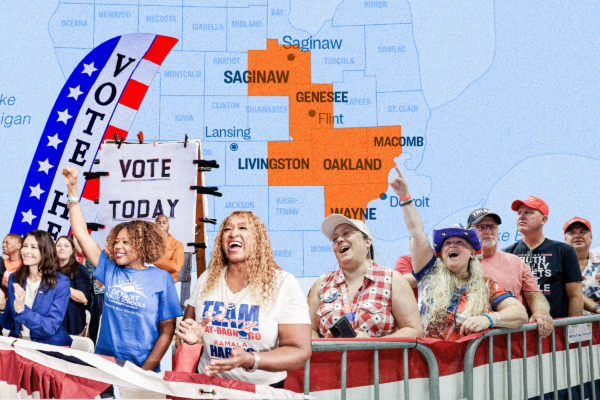On October 4, Vice President Kamala Harris held a campaign event in Flint, Michigan, while on October 3, former President Donald Trump held a rally in Saginaw County, less than 40 miles away. It is not surprising that they are actively present in central Michigan before election day.
The two cities are located along a 100-mile corridor on Interstate 75 between Detroit and Saginaw Bay. The election results of six counties will determine who will win the state’s 15 electoral votes and potentially impact the final tally on November 5 to decide the next president.
Michigan’s battleground counties are among the most fiercely contested areas in the country, requiring both parties to identify swing voters who could sway the election. Campaign teams are engaged in grassroots activities like door-to-door canvassing to locate undecided voters, highlighting the significance of local politics, especially during presidential elections.
Time is of the essence as Michigan began absentee and mail-in voting on September 26.
Chairman of the Democratic Committee for the 13th Congressional District, Jonathan Kinloch, stated on October 2 that every effort would be made to ensure success. The emphasis is on encouraging early voting, with a focus on securing victory for Harris.
Wayne County, which includes Detroit and Dearborn, is a stronghold for the Democratic Party. The surrounding Oakland County and Genesee County are also key areas in the state’s political landscape.
The Democratic party aims to defend its blue stronghold, particularly in Genesee County. Success in this endeavor could potentially help Trump regain the White House, secure a Republican win in the Senate seat for former Representative Mike Rogers, and assist the GOP in gaining ground in two swing House races.
Democrats are actively campaigning in the streets of these counties to secure overwhelming victories locally, which would ultimately impact the state elections.
The battle for Wayne County is crucial for Democrats, as it is a stronghold for the party, emphasizing the need to ensure grassroots voters generate the required votes. Kinloch pointed out that competition will be tight and every single vote will be essential in deciding the outcome.
Republicans must maintain their momentum in deeply red Livingston County while consolidating their control in Macomb County, which has previously supported Democrats in presidential elections.
Local Republican Party Chairmen such as Mark Forton highlighted the significance of Macomb County in determining the election outcome for Michigan, underscoring the importance of securing votes in traditionally low-turnout areas.
In the midst of intense competition in Michigan’s six battleground counties, Saginaw County stands out as a swing area between Trump and Harris.
In 2020, Biden won Saginaw County by a razor-thin margin of approximately 300 votes, a stark contrast to Trump’s victory in 2016. The county’s demographics and evolving economic landscape have made it a contentious battleground.
Matt Grossman, director of the Michigan State University Institute for Public Policy and Social Research, pointed out the significance of Trump’s appearance in Saginaw County on October 3, noting its historical ties to Trump’s political trends.
Saginaw County Republican Party committee member Dane Couture expressed optimism about the possibility of the county turning red, citing the competitive nature of the election campaign.
Democratic officials in Saginaw County believe that Harris’s presence has contributed to a positive shift in momentum since replacing Biden as the Democratic nominee.
Aileen Pettinger, the Democratic Party Chair for Saginaw County, highlighted the unprecedented level of grassroots volunteerism and community engagement, indicating a promising outlook for their campaign efforts.
The outcome in Saginaw County is anticipated to serve as a key indicator of broader electoral trends. The county’s significance may influence outcomes in other critical regions, further highlighting the importance of securing votes in these key areas.
The strategic campaigning efforts of both parties reflect a deeper engagement with voters, particularly in addressing economic concerns and seeking support from traditionally Democratic or swing voters.
Overall, the fiercely contested election landscape in Michigan underscores the complexity and significance of local politics in shaping broader electoral outcomes. The close monitoring of voting trends, community engagement, and effective mobilization of voters will be critical factors in determining the ultimate election results in the state.

